We all relish the refreshing feeling of dipping into a cool, clean inflatable pool on a hot summer day. Keeping your inflatable pool in a pristine condition ensures endless summer fun and safeguards your family and friends from potential issues. So, how to keep the inflatable pool clean? If you’re a parent with young children, a homeowner with limited yard space, or a renter seeking a low-cost summer activity, you will find all the information you need here.
My deep dive includes:
- Selecting the ideal cleaning supplies.
- Establishing a regular maintenance routine.
- Addressing common problems that may arise
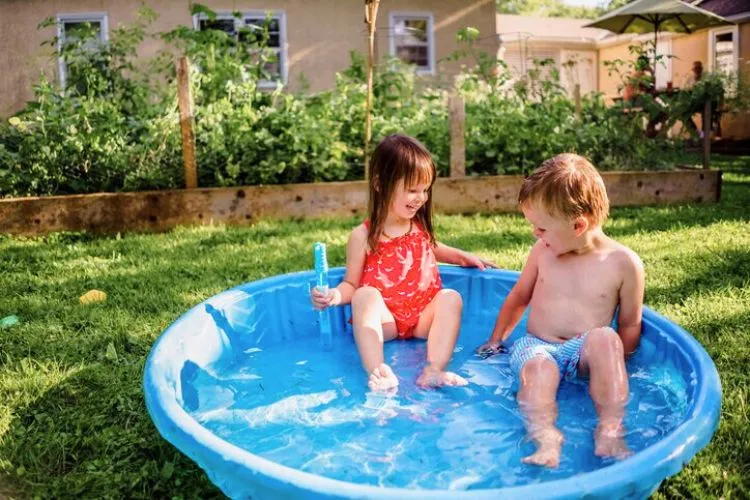
How to keep the inflatable pool clean?
Grab your pool floats and slather on the sunscreen because we’re about to reveal the secrets to achieving a safe, clean, inviting inflatable pool that everyone can enjoy. Let’s dive in and get ready to make a splash!
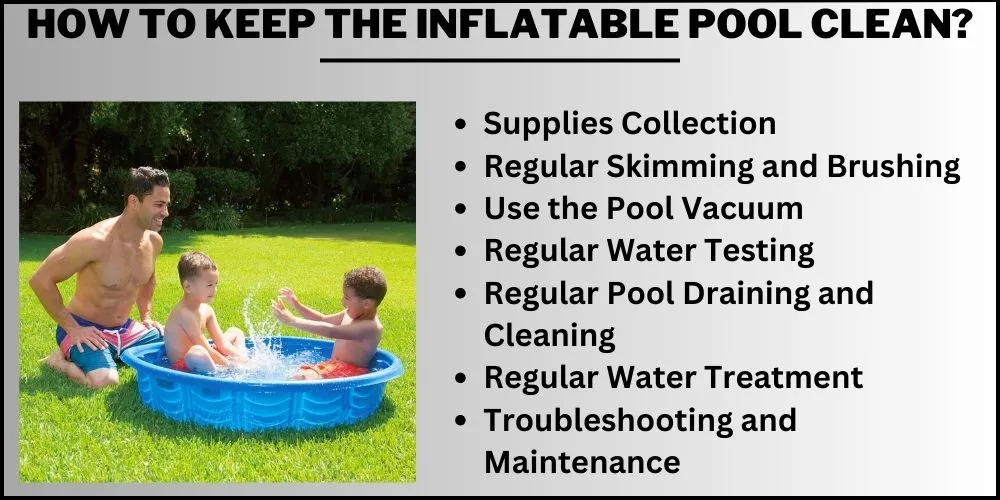
1. Supplies Collection
Gathering the right cleaning supplies is your first step in maintaining a clean inflatable pool. This includes:
- A pool skimmer or net: For removing floating debris, such as leaves, bugs, and dirt. Choose a net with a fine mesh to capture smaller particles.
- A soft brush: For cleaning the pool walls without damaging the material. An inflatable pool-friendly brush should have gentle bristles for vinyl or PVC surfaces.
- A non-abrasive cleaner: Select a safe and effective cleaner for inflatable pools. Avoid general household cleaners as they may contain harsh chemicals that could damage your pool or harm swimmers. Look for a cleaner designed for use in swimming pools and suitable for inflatable pool materials.
- A pool vacuum (if available): For cleaning debris and dirt from the bottom of the pool. Pool vacuums are designed specifically for small pools, which can operate manually or with a battery. These vacuums are lightweight and easy to use.
- A water testing kit is vital for monitoring your pool’s chemical balance. Test kits can measure pH levels, chlorine or bromine levels, alkalinity, and sometimes calcium hardness. Choose a kit that is easy to use and provides accurate readings.
- Pool chemicals (chlorine or bromine): These sanitizers keep your pool water clean and clear by eliminating bacteria, viruses, and algae. Opt for tablets, liquids, or granules, depending on your preferences and the recommendations for your pool size.
Remember, using regular household cleaners can harm the pool’s material and those who will be swimming. Make sure to use cleaners designed for pools.
2. Regular Skimming and Brushing
Remove any visible debris from the pool daily using your pool skimmer or net. This helps prevent particles from sinking and becoming more challenging to clean. Regularly brush the sides of the pool, including any seams or crevices, to prevent algae build-up. Be gentle when brushing to avoid damaging the inflatable pool walls.
3. Use the Pool Vacuum
If you have a small pool vacuum available, use it to clean the bottom of your inflatable pool, picking up any debris and dirt that may have sunk. Vacuum every other day, or more often, if you notice increased debris or your pool has been in high use.
4. Regular Water Testing
Regular water testing is an important part of inflatable pool maintenance. A water test kit will tell you the pH levels (ideally between 7.2 and 7.6), chlorine levels (between 1 and 4 ppm), and alkalinity (between 80 and 120 ppm). If your levels are off, use pool chemicals to adjust. Always follow the instructions on your water testing kit and pool chemicals to ensure safety.
5. Regular Pool Draining and Cleaning
Every two weeks, it is recommended to completely drain your inflatable pool, clean it with your soft brush and pool cleaner, and then rinse thoroughly before refilling. In cases where there’s heavy pool usage, consider doing this weekly. Don’t forget to reinsert the plug before refilling! Draining and cleaning help to maintain proper chemical balance and keep your pool fresh.
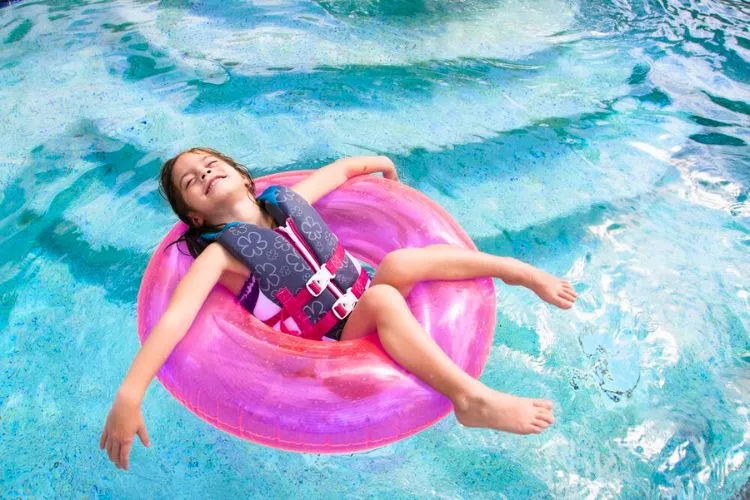
6. Regular Water Treatment
Treat your pool water regularly with a sanitizer, such as chlorine or bromine, to eliminate bacteria or algae. Follow the product instructions on how often and how much to use in your pool. This will depend on the sanitizer type, pool size, and frequency of use.
7. Troubleshooting and Maintenance
Familiarize yourself with common inflatable pool issues, such as discoloration, patching leaks, or water imbalances. A quick-fix knowledge base will save you time and perhaps a lot of water! Investigate problems immediately and seek professional help to maintain a safe and enjoyable pool environment.
Can you put anything in an inflatable pool to keep it clean?
To keep your inflatable pool clean, you can add the following products inside the pool:
- Sanitizer: Chlorine or bromine are popular choices as sanitizers for pool water. These chemicals kill bacteria, viruses, and algae, helping to maintain clean and clear water. Follow the manufacturer’s instructions for proper dosage and frequency to maintain safe, clean water in your inflatable pool.
- Clarifying Agents or Pool Floc: These chemicals, like algaecides or flocculants, can help clarify the water by clumping fine particles together, making them easier to filter or remove using a pool skimmer or vacuum.
- pH Balancers: Regularly testing your pool’s pH and keeping it balanced within the recommended range (typically between 7.2 and 7.6) can help maintain optimal water quality, preventing algae growth and sanitizers’ effectiveness. If the pH is too high or too low, use pH increasers (sodium carbonate) or pH decreasers (sodium bisulfate) to adjust the water chemistry.
- Alkalinity Increaser: Adding an alkalinity increaser (sodium bicarbonate) raises the total alkalinity in your pool water, which acts as a buffer to stabilize the pH levels. Maintaining alkalinity within the recommended range (80 to 120 ppm) helps prevent pH fluctuations, thus keeping your pool cleaner.
- Enzyme Pool Treatments: These treatments use natural enzymes to break down organic contaminants like oils, lotions, and other substances swimmers introduce. Enzyme treatments help keep your pool clean by reducing scum lines and the need for excessive scrubbing along the pool walls.
It’s essential to remember that using chemicals is just one aspect of overall inflatable pool maintenance. Regular cleaning, vacuuming, and balancing water chemistry create a safer swimming environment. Always follow the manufacturer’s instructions when adding any chemicals to your inflatable pool to avoid potential damage to the pool walls or harm to swimmers.
Will baking soda keep an inflatable pool clean?
Baking soda, or sodium bicarbonate, can help maintain the water chemistry in an inflatable pool, but its primary function is to raise total alkalinity, which stabilizes the pH level. Using baking soda to keep pH levels between 7.2 and 7.8 can prolong the life of your pool equipment and maintain a more comfortable swimming environment; however, it is not a standalone solution for keeping the pool clean.
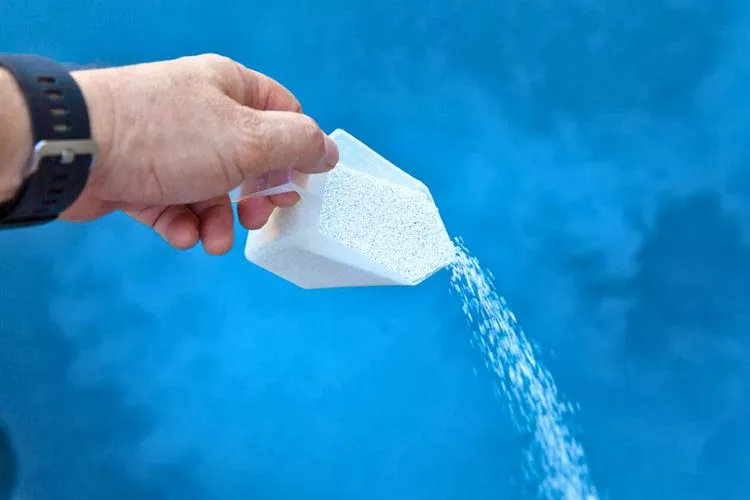
While baking soda can adjust your pool’s chemistry, it doesn’t serve the same sanitizing function as chlorine or bromine. To keep an inflatable pool clean, it’s essential to maintain proper water chemistry, including balancing pH, sanitizer levels, and alkalinity.
In conclusion, baking soda can contribute to maintaining a proper pH balance in your inflatable pool. However, you would still need other methods and products, such as sanitizers and regular cleaning, to keep the pool properly clean.
How much baking soda do I put in my kiddie pool?
The amount of baking soda needed depends on the alkalinity level and the volume of water in your kiddie pool. As a rule of thumb, 1.5 lbs of baking soda per 10,000 gallons of water will raise alkalinity by about 10 ppm.
However, most kiddie pools will hold less than 10,000 gallons of water. Therefore, you will need much less baking soda. Here’s what you can do:
- Estimate the volume of your pool or measure the alkalinity of the water using a water test kit.
- If the pH level is below the suggested 7.2, add 3-4 pounds of baking soda. However, if you’re just starting to add pool chemicals or your pool is small (like a kiddie pool), consider adding just a fraction (one-half or three-fourths) of the suggested amount.
Remember to continually check the pH and alkalinity levels, as adding too much baking soda could raise the pH to undesirable levels. It’s best to add and retest the water until you reach the desired levels.
Remember that pH and alkalinity are two different parameters you need to balance. While baking soda can help increase both, other agents, such as muriatic acid, can decrease them.
Can you swim immediately after adding baking soda to pool?
You can theoretically swim in the pool immediately after adding a small amount of baking soda. Baking soda, also known as sodium bicarbonate, is non-toxic and should not harm pool users.
However, if you need to add a large amount of baking soda to increase the pH of an acidic medium, it is recommended to wait for 6-12 hours before swimming. This allows the baking soda to fully dissolve and circulate in the pool water, ensuring a more even distribution.
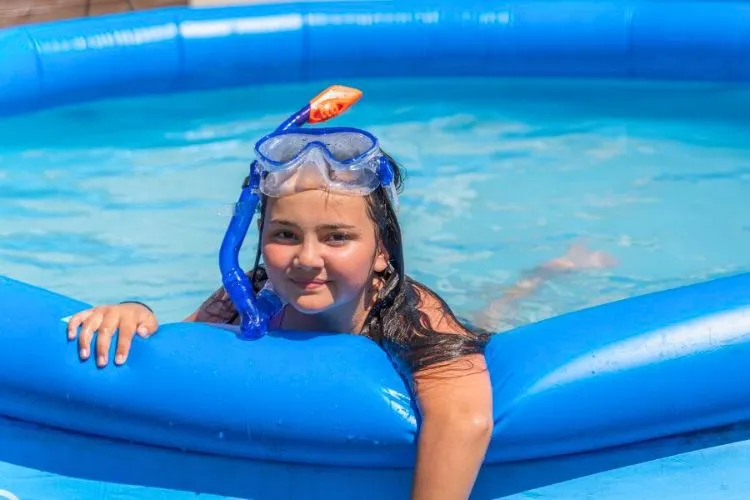
Remember, when using baking soda to adjust your pool’s pH or alkalinity, it’s crucial to add it slowly and in small increments, testing the water after each addition. This will prevent sudden changes in the water chemistry that could make the pool unsafe or uncomfortable for swimmers.
How Do I Keep My Inflatable Pool Water Clean Naturally?
Keeping your inflatable pool water clean naturally involves several steps:
- Regular Cleaning: Cleaning the pool often is crucial. Use a pool skimmer to remove debris and a soft brush or sponge to clean the sides and bottom of the pool.
- Water Changes: Drain and refill the pool regularly. Aim to do this every couple of days to a week, depending on usage and the current state of the water.
- Natural Sanitizers: You can experiment with natural sanitizers such as mineral purifiers. These release minerals like silver and copper, which have natural sanitizing properties.
- Use of Solar Cover: A solar cover can prevent debris, bugs, and leaves from entering your pool.
- Pre-entry Rinsing: Ensure everyone rinses before entering the pool to minimize introducing dirt and oils.
How Do I Keep My Inflatable Pool Clean All Summer?
Maintaining a clean inflatable pool all summer involves regular care:
- Consistent Cleaning: Regularly remove debris with a skimmer and clean the sides with a soft brush.
- Routine Water Change: Regularly changing the water in your pool helps maintain a clean pool.
- Chemical Balance: Regularly check pH and adjust for optimal balance.
- Sanitize: Use sanitizing chemicals such as chlorine or bromine tablets.
- Using Pool Cover: A pool cover can help keep your pool clean by removing debris when not in use.
How Do You Keep an Inflatable Pool Clean Without a Filter?
With proper care, you can keep an inflatable pool clean even without a filter:
- Regular Cleaning: Remove debris daily with a pool skimmer. Use a soft pool brush to clean the sides and bottom of the pool.
- Frequent Water Changes: Plan to change the water in your pool frequently (at least once a week or more, depending on usage) to minimize contaminant buildup.
- Chemical Use: Use chlorine or bromine to kill bacteria and algae.
- Balanced pH: Regularly check the pH levels and adjust them with suitable chemicals to keep them within the correct range.
- Pre-swim Rinse: Encourage swimmers to rinse off before entering the pool to minimize body oils and sweat from contaminating the pool water.
You may also find useful: How To Keep Kiddie Pool Clean? | What To Put Under Inflatable Pool On Grass?
Conclusion:
Maintaining a clean and safe inflatable pool requires consistent care and attention. By incorporating regular cleaning, appropriate water changes, and proper use of sanitizing agents, you can ensure a pleasant swimming experience for all users throughout the season.
Additionally, employing preventative measures such as pool covers and pre-swim rinses can further contribute to keeping your pool in pristine condition. By following these practical strategies and best practices, you can fully enjoy your inflatable pool while safeguarding the well-being of your friends and family. I hope the guide regarding how to keep the inflatable pool clean has be helpful.


